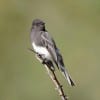 By Jim Stevenson
By Jim Stevenson
Hi Folks, I have been in Costa Rica a few days, checking on birding sites and such, and have already seen such great stuff! Mmmmmmmmm. Listen, if there is ANYONE I don’t already know about, who’s interested in either the Plains/Rockies trip (the ten days following Memorial Day), or the Australian Trip just after July 4, please say something now! I’m about to start organizing them.
Also, if anyone would like to share a room with me February 28 to March 10, as I explore some sites in EASTERN VENEZUELA, (like la Gran Sebana), lemme know. It’s a scouting trip for me as guide-director, but I’ll be doing a great deal of birding. Cheap but not fancy hotels, etc.
Your gallery is on the bug-eating birds from our recent Western Trip in January. Enjoy!
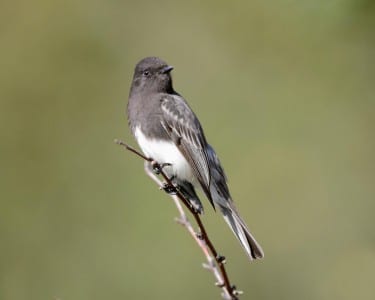
Most of us grew up knowing a phoebe as the greenish-gray, tail-bobbing flycatcher that makes its way to the Deep South for the winter in October. Out West, though, there are two other phoebes, and this Black Phoebe is unmistakable. This species is often seen near water, while the next one prefers drier country, even desert.
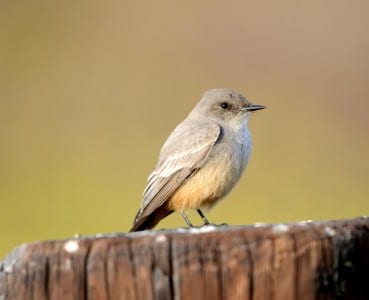
Say’s Phoebes are equally common out West, and have taken on the color of the desert floor. Some winters they show up back East, and I had one near Anahuac NWR in November. Don’t let the beige flanks confuse you into thinking it’s a female Vermilion, as there are none of the streaks of that species’ fairer (?) sex.
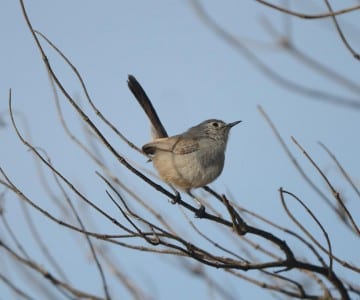
This is the famed California Gnatcatcher that drove former President Clinton crazy. His people worked a compromise that attempted to set aside adequate lands for gnatcatchers, while approving others for development. It seems he infuriated both sides and probably wished he’d never fooled with it. There are two other rare gnatcatchers along the Mexico Border, p lus the widespread Blue-gray.
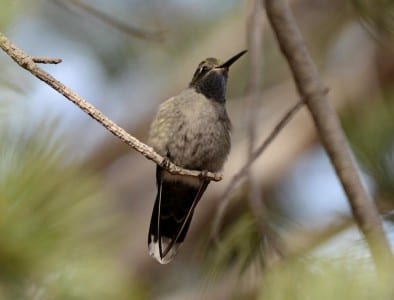
There are two large hummingbirds in SE AZ and this is the Blue-throated. The darker one (Magnificent) is often seen higher in the mountains but both are exciting species to see in those “Mexican” mountains. Hummers are normally seen sipping nectar at flowers and feeders but they take a lot of small insects, and must provide this protein for their chicks.
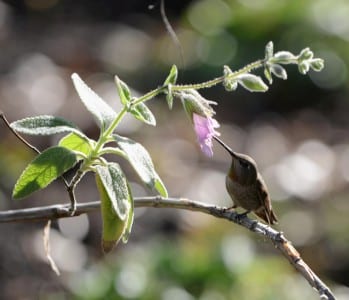
Almost a dead ringer for a Rufous Hummingbird is the Allen’s, but their range is quite constricted along the Pacific Coast where they are fairly common. Occasionally one wanders eastward and really creates a problem with identification, often making tail feathers the deciding factor.
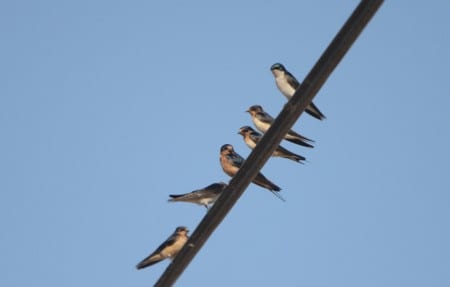
Nothing says insectivorous more than swallows, and these guys were near the Salton Sea around New Year’s. Tree Swallows (right bird) are all over the southern United States in winter, often eating berries for sustenance, but this is the only area in the Country where Barn Swallows regularly winter. They did make me do a double take! :0
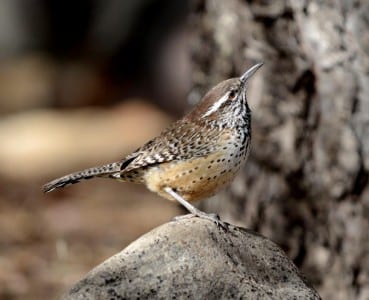
Cactus Wrens are one of several very large wrens found through the Amer icas. They will make harsh, scolding sounds and are very conspicuous birds. I have often seen them atop Sag, er, Sawa, er, really large cactuses, showing off their glorif ied-Carolina plumage with extra markings. Seriously, the Saguaro Cactus communities are wonderful oases for all kinds of neat birds and other animals.
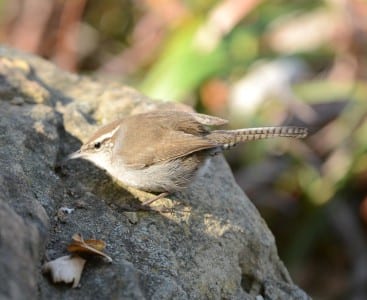
Bewick’s Wrens are found in both halves the Country but are becoming frightfully scarce in the eastern half. Their name is mispronounced by many, as it actually sounds like the car, not Bugs Bunny. They have very long bills for probing into crevices and our bird is not nearly as colorful as the Carolina. This is a very scarce bird on the UTC.
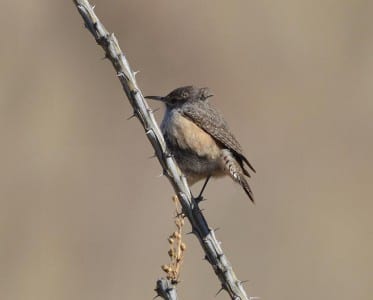
Less common but found in the arid regions is the Rock Wren. You can see from this that they take to desert vegetation, thorns and all. Their long bills probe between thorns for insects and dispatch stinging and biting bugs with ease. These can be found just about anywhere in the western, dry mountains.
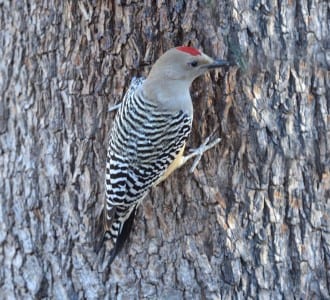
Birds like this Gila Woodpecker eat insects as fast as they eat seeds. You can see how terrific barred backs are for cryptic coloration, as well as how well semizygodactyl feet work. If this bird was in your back yard, would you notice it was not a Red-bellied? One of the marks of an excellent birder is how many rare birds they find that are similar to common species.
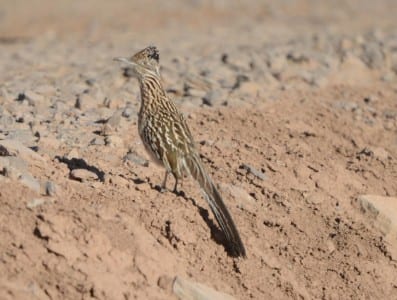
A cuckoo that definitely doesn’t “fit the mold” is the roadrunner, with our Greater being one of two species north of the Equator. They race along the bare ground chasing lizards and small snakes, p lus small rodents like mice, occasionally. One in Portal, AZ, was even jumping off the roof (eavesdropping?) grabbing hummers at a feeder.
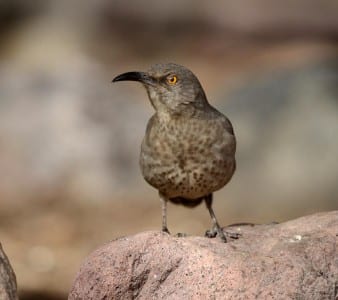
Curve-billed Thrashers are fair ly common in the Desert Southwest and conspicuous as well. Their yellow eye is a dead giveaway (like a will) and the beak is also a clue. There are several thrashers in the Desert Southwest, some rare and others easy to find, with this one being the commonest.
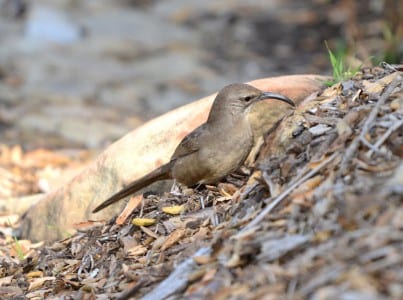
Talk about a bill! This is the California Thrasher, tossing aside leaf litter as it forages for bugs. Their Whimbrel beak helps them dig while they watch for predators, and I also found this bird to be quite wary (and it was in a sanctuary). Like sparrows, thrashers can be streaked or unstreaked, depending on their habitat.
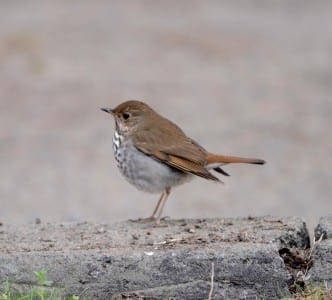
Hermit Thrushes are our only “transient” thrush that normally winters in the US, as the others are in the Tropics. The reddish tail is a dead giveaway, and they often flick it up as they issue their “chuck” call note. As you go west they tend to be grayer, but the song is ever-pleasing despite the longitude.
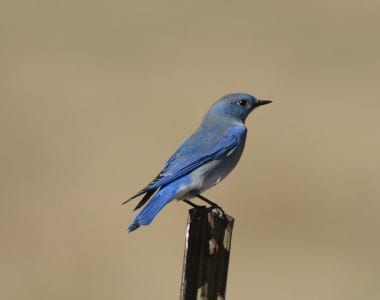
Mountain Bluebirds will often hawk for insects from an exposed perch. This is a female, easily told by the grayish on the mantle, but males lack the red found on the other two’s chest. Some birds of the western mountains fly east in fall and spend the winter in the Great Plains, which is often the case with this species.
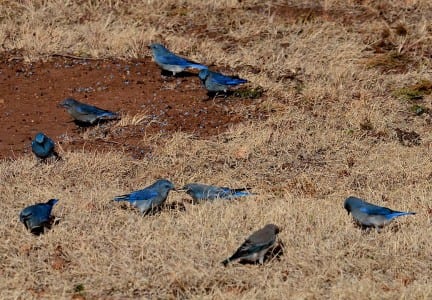
Here is a small flock of Mountain Bluebirds feeding on cedar seeds. There’s an immature in the foreground and both sexes behind further back. This species and the Western don’t get to the Galveston/Houston area, and in fact, even Easterns are absent on the Island. In the fifties and sixties bluebirds became quite scarce due to DDT, but since have come back, partly owing to all those who allow them safe nesting in their yards.
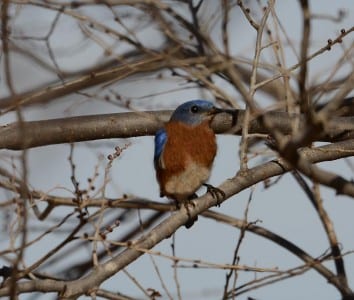
Western Bluebirds are quite a bit like Easterns in appearance but have reddish going over the shoulder. They are common out West and are a prime example of a species that diverged from a superspecies, resulting in them and the Eastern. Divergent evolution is very obvious and often seen in this east-west phenomenon.
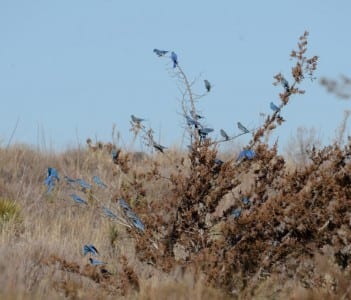
One more picture to give you an idea of the Mountain Bluebirds in Oklahoma. Birds flock in the migration and winter season, but generally not in the breeding season. These birds form flocks in winter of several dozen at times, filling the gray or green vegetation with sky blue. There is so much fruit, there is little competition for berries.
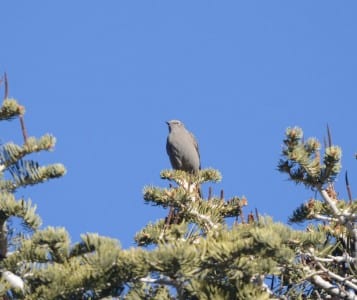
Solitaires are thrushes of New World origin, ranging down well into the Tropics. This is the Townsend’s Solitaire, a bird of the western mountains of North America, often coming lower in winter. Not an especially tame bird, this creature was shot out my winder as I drove up the mountain to see the rosy-finches.
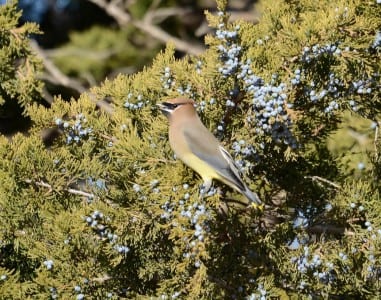
Feeding with the bluebirds seen ear lier, Cedar Waxwings are fruit and berry eaters in the winter season but deliver insects to their chicks in summer. If you look hard you can see the yellow tail-tip on the bird, but this immature lacks the red tips (wax?) on the feathers we call secondaries. He or she (as the case may be) will gain its red “wax” next year.
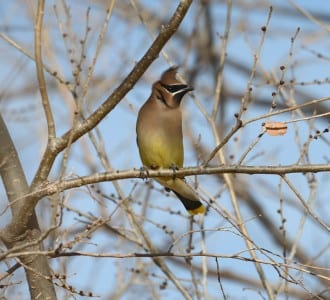
One of the characteristics of the Great Plains is that the winds blow very hard, with little to slow it down. This was a difference I noticed when I moved from the heavily-forested North Florida region to my house on hominid hill in Galveston. Many masks on birds are designed to hide the eye, and except for the glint, this is working to perfection.
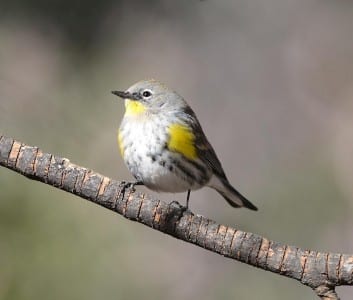
This species of warbler, the Yellow-rumped, is conspicuously insectivorous, flying out among the open spaces in forests and snagging airborne bugs. The yellow rump and flanks ID it to species but the yellow throat designates the western race – the Audubon’s – as our Myrtle of the East has a white throat.
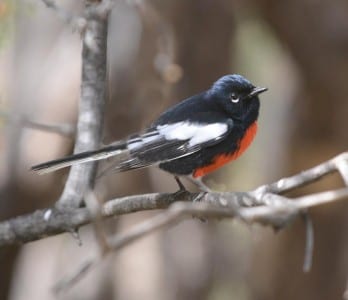
Almost too colorful for winter, this Painted Redstart not only has no drab plumage in winter, it also has no drab female (curiously unlike the Amer ican Redstart). These are residents in SE AZ and SW NM, somehow finding bugs in the cold season in the dry forested canyons. In the Tropics, there are others of this group called Whitestarts.
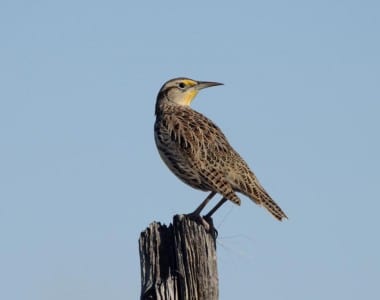
Eastern and Western Meadowlarks are quite similar but separated by the Great Plains. The easier difference is the vocalization, where Easterns have descending whistles and Westerns sing like orioles. Both species feed by “bill gaping,” where they stick the beak into a bunch of grass and open it suddenly, revealing bugs in the opening. This one’s a Western, and from this angle, notice the unconnected ladder rungs on the wing and tail feathers.
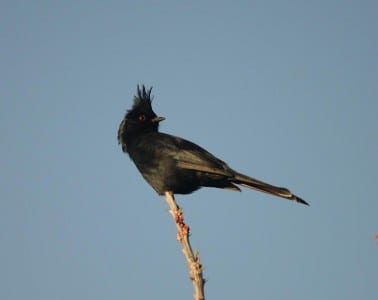
Phainopepla are members of the tropical group of silky flycatchers, with ours having black males (blackmail?) and gray females. They are expert at catching flying insects but also take berries if available. In winter, this species will flock together on limbs in canyons, with all being warmed by the body heat of the adjacent birds. It seems to me there are also quail that do this.
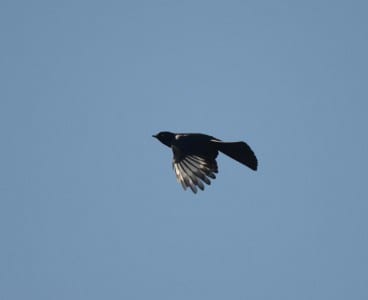
Lastly, a Phainopepla in the air. Note the white, flash colors as it flits along from tree to tree. The white in the primaries denotes an expendable portion of the body, meaning it’d be better if a sharpie took a fistful of primaries than the whole bird. This is one of the reasons so many birds have patches in the wings and/or tail.

 Posted in
Posted in 























